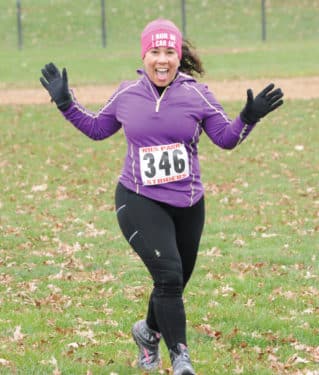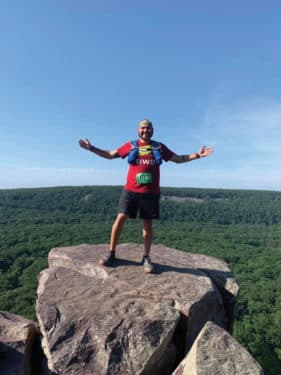Start slowly — you have to walk before you can run
Evelyn Cato began her journey as a runner by walking. When she was young, her family didn’t emphasize exercise. And Cato, who’s Latina, says she never saw anyone who looked like her go running in her Humboldt Park neighborhood.
Then, two decades ago, Cato noticed her weight going up. As a nurse practitioner, she wanted to avoid inheriting her family’s history of hypertension and diabetes. So Cato, who now lives in Logan Square, began taking 10 minutes of her lunch break to walk half a mile.
A co-worker joined her, and their walks turned into “trots” — first one block and then another.

“I wasn’t as tired,” says Cato, 55, of how she felt after their lunchtime runs. “I felt more energy. I was less stressed out. I just kept going out, every day pushing myself to run a little farther and a little farther.”
As a program coordinator for ’Go Run Chicago, a partnership between the Chicago Area Runners Association and the Chicago Park District, Cato now organizes regular one-mile and 5K runs in the Humboldt Park neighborhood of her youth, encouraging those who look like her (and anyone else) to pick up the sport.
Like many people, Cato discovered running not only helped her heart and weight but also boosted her outlook and confidence.
Carrie Jaworski, MD, director of the division of primary care sports medicine at NorthShore University HealthSystem, says running helps in holistic ways.
“I will say that, as a runner, running is my form of therapy,” says Jaworski, who is a lead physician for the Bank of America Chicago Marathon. “For many people, just being able to escape the many demands of our busy lives and go out and be by yourself or be with a close friend, there’s absolutely a benefit.”
Changing mindset
Six years ago, after two tours in Afghanistan, West Dundee resident Habacuc Rico, 32, ended his service in the U.S. Army. During his time as an Army specialist, he hated running the most. But then, at a checkup in 2017, his doctor told him his triglyceride and cholesterol levels had shot up. He had developed a fatty liver. His weight had ballooned as well.

Rico decided to take a 3.7-mile walk every day for a month in Raceway Woods Forest Preserve in Carpentersville, incorporating running as he went along.
And then, a good friend of his from the Army, Marc Fleury, 30, who suffered in part from post-traumatic stress disorder, killed himself.
“That’s when I changed my whole mindset, from running not only for me but for my friend in the military who committed suicide to all military members who didn’t make it back home or who no longer run. I had hated [running] so much, but then I fell in love with it because I had a purpose,” Rico says.
Since Rico began those walks in the woods four years ago, he has run not only multiple marathons but also a 50-kilometer and a 50-mile race. Along the way, his triglyceride and cholesterol levels dropped, and he lost 85 pounds.
For runners like Rico, establishing a consistent habit is key. By starting with walking and gradually building a running practice, fitness experts say, you’ll be setting yourself up for physical and mental success.
“Everything about running,” Rico says, “it just changes you as a person.”


A
Above photo: ’Go Run Chicago race. Photos courtesy of the Chicago Area Runners Association. Originally published in the Spring/Summer 2021 print issue.

Erin Chan Ding is a Chicago-area journalist and editor who writes about travel, fitness, trends, tech, and the intersection of race and identity.










